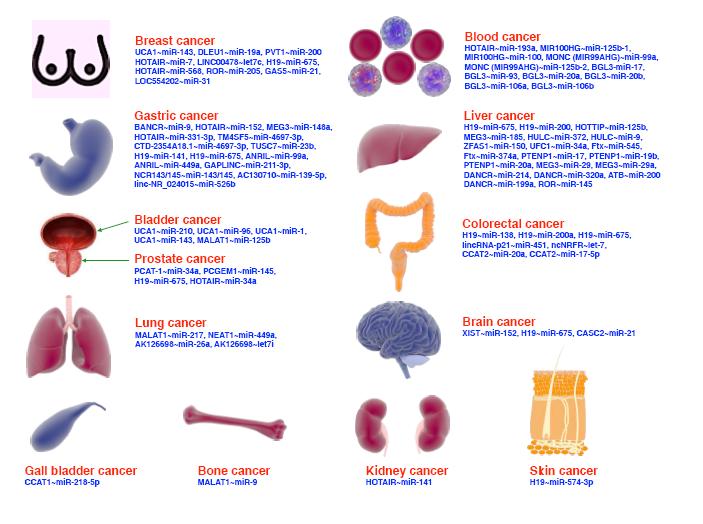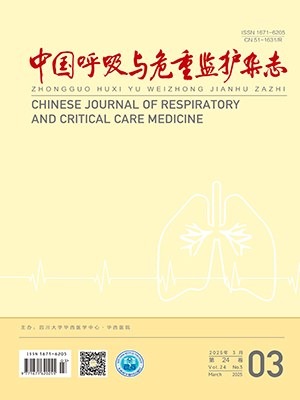Objective To explore whether positive end-expiratiory pressure (PEEP) guided by the esophageal balloon manometry is better than the ARDS Network standard of care recommendations during treating traumatic acute respiratory distress syndrome (ARDS) patients with mechanical ventilation.
Methods Twelve traumatic ARDS patients selected from September 2013 to March 2015 in ICU of Xiamen No. 3 Hospital were administrated esophageal balloor catheter and underwent mechanical ventilation with PEEP adjusted according to measurements of esophageal pressure and the ARDS Network standard of care recommendations simultaneously. According to the selection method of PEEP, the patients were divided into two groups:the esophageal pressure guided group and the ARDS Network recommendations guided group (the control group). The changes of peak inspiratory pressure, esophageal pressure, transpulmonary end-expiratory pressure, transpulmonary end-inpiratory pressure, lung compliance at 0 h, 24 h, 48 h, 72 h following different PEEP treatments were observed and compared between two groups of patients.
Results A mean PEEP in the esophageal pressure guided group of (10.98±4.36)cm H2O was significantly higher than the control group of (7.13±2.21)cm H2O (P<0.01). The transpulmonary end-expiratory pressure was significantly higher in the esophageal pressure guided group (0.71±0.62)cm H2O than the control group (-2.29±3.49) cm H2O. And all of the mean transpulmonary end-expiratory pressure remained above zero in the esophageal pressure guided group, whereas in the control group 73% patients remained negative (P<0.01).
Conclusions Esophageal pressure method adjusts PEEP for traumatic ARDS patients with mechanical ventilation through estimating pleural pressure so as to calculate transpulmonary pressure. It can identify traumatic ARDS patients who would benefit from the high PEEP, adjust PEEP individually and meet patients' need more satisfactorily.
Citation:
RanYanni, WuBin, WangBing. Comparison of Esophageal Pressure Measurement with ARDS Network Standard of Care Recommendations in Selection of Positive End-expiratiory Pressure for Traumatic ARDS Patients with Mechanical Ventilation. Chinese Journal of Respiratory and Critical Care Medicine, 2015, 14(6): 565-568. doi: 10.7507/1671-6205.2015137
Copy
Copyright © the editorial department of Chinese Journal of Respiratory and Critical Care Medicine of West China Medical Publisher. All rights reserved
| 1. |
Mols G, Priebe HJ, Guttmann J. Alveolar recruitment in acute lung injury. Br J Anaesth,2006,96:156-166.
|
| 2. |
Talmor D, Sarge T, Malhotra A, et al. Mechanical ventilation guided by esophageal pressure in acute lung injury. N Engl J Med,2008,359:2095-2104.
|
| 3. |
张汝敏,王世富,马爽,等.PiCCO技术指导下不同呼气末正压水平对ARDS患者氧合的影响.中华急诊医学杂志,2013,22:1398-1403.
|
| 4. |
Hess DR, Bigatello LM. The chest wall in acute lung injury/acute respiratory distress syndrome. Curr Opin Crit Care,2008,14:94-102.
|
| 5. |
严姝瑛,陈远卓,彭沪.腹腔高压对急性肺损伤猪呼吸系统的影响.同济大学学报(医学版),2012,33:68-71.
|
| 6. |
严姝瑛,庄育刚,葛奎.呼气末正压对急性肺损伤伴腹内高压猪心肺功能的影响.中国呼吸与危重监护杂志,2014,13:360-363.
|
| 7. |
Grasso S, Fanelli V, Cafrelli A, et al. Effects of high versus low positive end-expiratory pressures in acute respiratory distress syndrome. Am J Respir Crit Care Med,2005,171:1002-1008.
|
| 8. |
Buytendi JH. Intraesophageal pressure and lung elasticity. Gmningen, Netherlands:University of Groningen,1949.
|
| 9. |
Higgs BD, Behrakis PK, Bevan DR, et al. Measurement of pleural pressure with esophageal balloon in anesthetized humans. Anesthesiology,1983,59:340-343.
|
| 10. |
Mead J, Takishima T, Leith D. Stress distribution in lungs:a model of pulmonary elasticity. J Appl Physiol,1970,28:596-608.
|
- 1. Mols G, Priebe HJ, Guttmann J. Alveolar recruitment in acute lung injury. Br J Anaesth,2006,96:156-166.
- 2. Talmor D, Sarge T, Malhotra A, et al. Mechanical ventilation guided by esophageal pressure in acute lung injury. N Engl J Med,2008,359:2095-2104.
- 3. 张汝敏,王世富,马爽,等.PiCCO技术指导下不同呼气末正压水平对ARDS患者氧合的影响.中华急诊医学杂志,2013,22:1398-1403.
- 4. Hess DR, Bigatello LM. The chest wall in acute lung injury/acute respiratory distress syndrome. Curr Opin Crit Care,2008,14:94-102.
- 5. 严姝瑛,陈远卓,彭沪.腹腔高压对急性肺损伤猪呼吸系统的影响.同济大学学报(医学版),2012,33:68-71.
- 6. 严姝瑛,庄育刚,葛奎.呼气末正压对急性肺损伤伴腹内高压猪心肺功能的影响.中国呼吸与危重监护杂志,2014,13:360-363.
- 7. Grasso S, Fanelli V, Cafrelli A, et al. Effects of high versus low positive end-expiratory pressures in acute respiratory distress syndrome. Am J Respir Crit Care Med,2005,171:1002-1008.
- 8. Buytendi JH. Intraesophageal pressure and lung elasticity. Gmningen, Netherlands:University of Groningen,1949.
- 9. Higgs BD, Behrakis PK, Bevan DR, et al. Measurement of pleural pressure with esophageal balloon in anesthetized humans. Anesthesiology,1983,59:340-343.
- 10. Mead J, Takishima T, Leith D. Stress distribution in lungs:a model of pulmonary elasticity. J Appl Physiol,1970,28:596-608.




